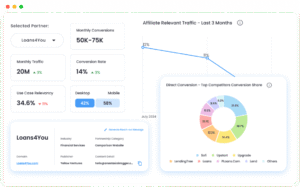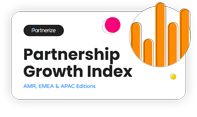
The performance marketing channel is the perfect environment for testing some of the more innovative and unique online customer acquisition strategies. This is especially true for insurance brands, who sometimes struggle to differentiate their products through traditional means. With that in mind, here are five ways leading insurance brands can optimize their existing affiliate programs:
1) Brand to Brand Partnerships
Brand-to-brand partnerships are something Performance Horizon have had great success with. Empowering brands to share new customer pools with other complimentary brands and measure that performance transparently is a great way to drive incremental growth.
An example of how this could work is by promoting to an audience of employees from brands in other verticals such as retail and travel. By transferring the cost of commissions usually paid to publishers into a discount or reward which directly benefits the targeted employees, insurance brands can target new pools of known quality customers within their existing affiliate programs. Alternatively, they may wish to create more complex bespoke campaigns targeting one another’s customer bases and offering rewards to those customers in place of the classic commission payment.
2) Syncing Reward Structures with Business Strategy
Insurance companies are increasingly focusing on acquiring valuable customers. It is no longer sufficient to simply drive large volumes – to demonstrate the value of the affiliate channel, they must drive high-quality, loyal customers.
The perfect way to achieve this is by rewarding partners for meeting these KPIs collected at and after the point of sale or, in the case of insurers, at the time of approval and after a certain period of time.
Examples of these KPIs could include:
- The level of cover chosen in a policy
- Whether a claim has been made in the first three months
- If a customer has renewed their policy
- Whether a customer has also downloaded the corresponding app.
Capturing this data and tailoring commissions for the partner based on whether the consumer has satisfied these conditions will enable brands to drive the type of customer they want much more readily.
Therefore, it is paramount for insurers to be able to capture policy level data about the conversion and seamlessly tie commissions back to this.
3) Physical or Digital Customer Rewards
For many insurance brands, it is difficult to differentiate certain products from the hundreds of others in their typically crowded and highly competitive marketplace. Sometimes an added incentive in the form of a physical or digital reward managed through the existing affiliate program support new customers to make a purchase decision.
This type of strategy usually works best when used in a promotional sense at certain times of the year. This both prevents saturation and boosts activity when needed. Brands may wish to employ external fulfilment agencies who have experience in this field or manage it internally. This can be a standalone campaign targeted at customers driven through existing partners or used as part of a relationship with another brand.
For example – partnering with a music streaming service offering 3 months’ free subscription upon an approved policy being issued. Or partnering with a points-based partner to reward successful applicants with points from a loyalty provider such as Avios.
5) Optimising Placements and Media Buys
Insurance brands typically only operate with a select few partners in their affiliate programs. This means that it is critical to analyze the different placements and promotions in the different areas of those partners’ websites.
By using different tracking links to monitor the performance of home page placements, emails, paid tenancies or blog posts, brands can begin to identify where the best quality customers are coming from and amend their strategy accordingly. For example, it may be the case that paid tenancies are not performing as expected – this would give brands the leverage to negotiate a better rate for the next round or even persuade the partner to operate on a pure performance basis i.e. no fixed costs and only paying for approved openings.
Having the ability to tag, measure and pay different commissions on different placements, newsletters etc allows you to adopt a test and learn approach – allowing you to spend and invest more accurately on what delivers the best return.
5) Separate Quotes from Sales
The insurance purchase journey is split into two distinct sections: the quote and the sale. Affiliate marketers need to ensure they are effectively measuring the key metrics related to both of these elements to gain a full understanding of their programme.
For example, it may be evident that a certain partner is driving lots of applications but these customers do not go on to convert to the sale stage. This would allow brands to better identify issues in the customer journey and take steps to rectify them e.g. a copy change may be required on the partner website to better set expectations for customers as to how long the application / sale process may take.
Having this level of data available will also help to shape wider company strategy in regards to the journey customers take in order to take out a policy.
Want to know more about partner marketing in the insurance sector? Reach out to the Performance Horizon team today.




